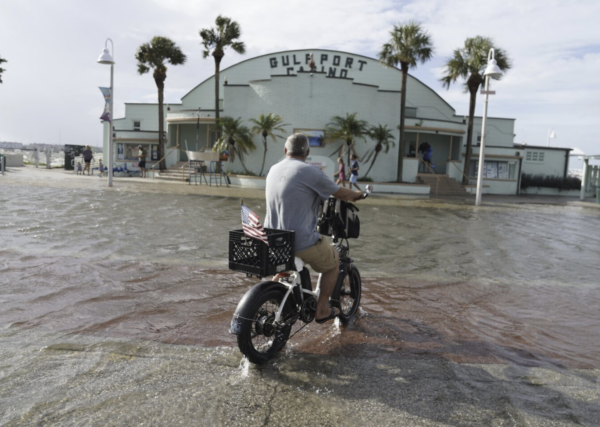BREAKING: Hurricane Helene weakens to a tropical storm with maximum sustained winds of 70 mph over Georgia https://t.co/xkvXNpxsY5
— The Associated Press (@AP) September 27, 2024
While we wait to hear about the last of Helene (see the top link on the right-hand sidebar), here’s a moment of Zen:
Opinion | Hillary Clinton: To err is human, to empathize is superhuman | WaPo | (This column was adapted from her newly published book, “Something Lost, Something Gained: Reflections on Life, Love, and Liberty.”) @HillaryClinton 📚 https://t.co/6SLwqQBYpS
— Vikki Marshall (@VikkiMarshall4) September 25, 2024
The Washington Post has an extract from Hillary Clinton’s new book, “To err is human, to empathize is superhuman” [gift link]:
… Shannon Foley is a former white supremacist who now works to deprogram and rehabilitate people leaving hate groups. Shannon took my daughter, Chelsea, and me canoeing near her home in Athens, Ga. It wasn’t lost on me as we paddled along that we weren’t far from the site of the last documented mass lynching in America, Moore’s Ford Bridge, where a mob of 20 armed White men shot and killed two Black couples in 1946. One of the women killed was seven months pregnant. To this day, no one has been held accountable for their murders.
Back in the 1990s, from the time she was 15 until she was 20, Shannon was active in the violent white-supremacy movement. She attended Ku Klux Klan rallies, tagged public property with swastikas, assaulted people of color, tear-gassed an LGBTQ+ nightclub and underwent paramilitary training to prepare for the race war her neo-Nazi leaders promised was imminent. Her comrades were white supremacists like the fanatics who years later carried torches through Charlottesville chanting “Jews will not replace us!” and like many of the insurrectionists who stormed the Capitol on Jan. 6, 2021.
Then, remarkably, she managed to get herself out and change her life. Now, Shannon helps people escape violent extremism. She’s seen how the dangerous, hateful movement has metastasized. The rise of social media allowed white-power leaders to more easily reach and radicalize thousands of recruits. Hate-fueled memes and videos circulate online, evading detection in the dark corners of the internet with coded hashtags and innuendo. Things only got worse when Donald Trump publicly and proudly fanned the flames of racial resentment from the campaign trail and then the White House, emboldening white supremacists to emerge from the shadows…
Shannon is doing what she can to fight back. She rescues people she meets online, at white-supremacist rallies or through concerned loved ones. When she’s trying to deprogram white supremacists, her approach is not to try to change their politics but to help them address their trauma and move away from resorting to violence. “I’ve found you can’t argue people out of their deeply entrenched worldview. They just entrench further,” Shannon says. So she asks a lot of questions and patiently listens. What drew them to the white-power movement? How is it serving their life? Why are they afraid of leaving? What might their lives look like without hate? These connections can take a long time to develop, and even longer to lead to deradicalization. Disengagement, she says, is a process — not an event.
TGIFriday Morning Open Thread: After the StormPost + Comments (284)












